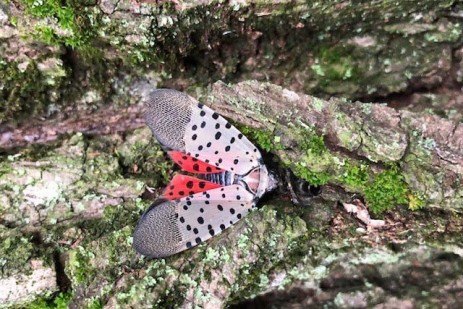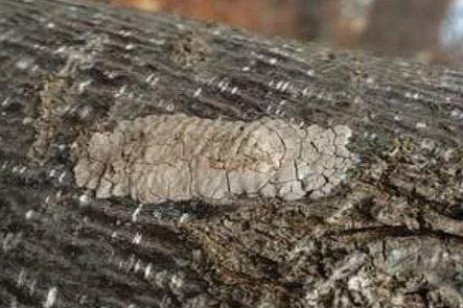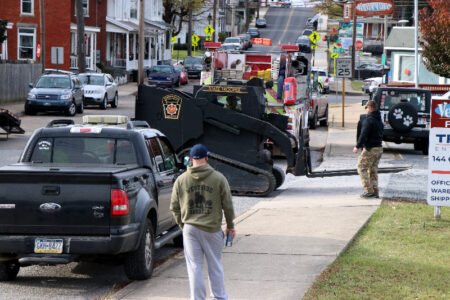CHAMBERSBURG—You’ve probably heard about the spotted lanternfly. You may have seen one of the colorful red and brown spotted insects. But now is the time to look around your yard and make sure you aren’t harboring these invaders—before they hatch.
A threat to agriculture
The spotted lanternfly is an invasive species native to Asia. In 2014, it was discovered in Pennsylvania and has since spread across the state, according to the Department of Agriculture.
The SLF causes serious damage including oozing sap, wilting, leaf curling and dieback in trees, vines, crops and many other types of plants.
In addition to plant damage, when spotted lanternflies feed, they excrete a sugary substance, called honeydew, that encourages the growth of black sooty mold.
This mold is harmless to people however it causes damage to plants. In counties infested and quarantined for spotted lanternfly, residents report hundreds of these bad bugs that affect their quality of life and ability to enjoy the outdoors during the spring and summer months.
Spotted lanternflies will cover trees, swarm in the air, and their honeydew can coat decks and play equipment.
In addition to damaging trees and affecting quality of life, the insect is a huge threat to Pennsylvania agriculture industry. The economic impact could total in the hundreds of millions of dollars and hundreds of thousands of jobs for those in the grapes, apple, hops, and hardwood industries.
Last year, the PDA added Franklin County to its list of counties in Spotted Lanternfly Quarantine. (A county is placed under quarantine when evidence of a reproducing population of spotted lanternflies, such as an egg mass, is found by the PDA.)
Be on the lookout
SLF egg masses are laid in the late summer and into the early winter, with the majority of egg mass deposition occurring in October. These egg masses survive winter and hatch into SLF nymphs in the spring and each egg mass contains an average of 30-50 eggs, and an individual female can lay at least 2 egg masses.
These egg masses are the only stationary stage of the SLF, making them an easy target for removal.
SLF egg masses are usually about 1.5 inches long and colored brown/grey; however, there can be a lot of variation among them, according to Greg Krawczyk, research professor, Penn State Extension.
All egg masses contain rows of small eggs, roughly the size of a sharpened pencil point. Eggs within the egg mass can vary in color from a yellow to brown.
After the female lays the eggs, she covers them with a substance believed to help them survive winter conditions and protect them from predation. When this substance is first deposited, it is white and glossy. After a few hours, the substance becomes duller and dries to a darker grey/brown color.
The SLFs lay their eggs in a variety of places, most commonly on trees (preferably red maple, silver maple and willows) next to their feeding site.
However, SLF will also lay eggs on trees they do not heavily feed on, including black cherry and pine trees.
SLF prefer to lay egg masses in protected areas such as the undersides of tree limbs, picnic tables, and other outdoor surfaces that are horizontal or angled toward the ground.
Find it, kill it, report it
If you find egg masses on your property from September to May, you can scrape them off using a plastic card or putty knife.
Scrape them into a bag or container filled with rubbing alcohol or hand sanitizer and keep them in this solution permanently. Egg masses that are scraped to the ground can still hatch, so it is important to follow all steps.
Egg masses can also be smashed but be sure to apply even and forceful pressure to the entire egg mass. A properly smashed egg will burst open.
(Learn more at How To Remove Spotted Lanternfly Eggs.
If you see a spotted lanternfly, it’s imperative to immediately report it online or via phone by calling 1-888-4BADFLY.






















